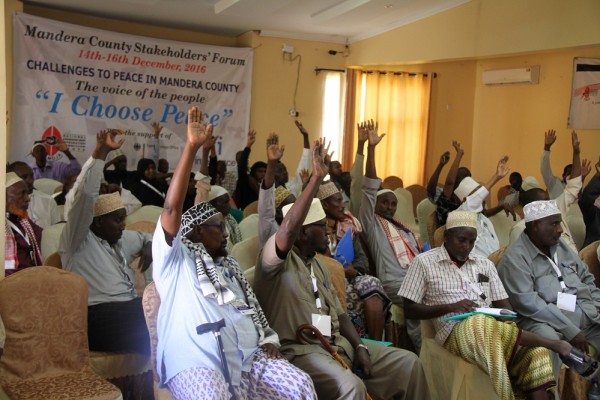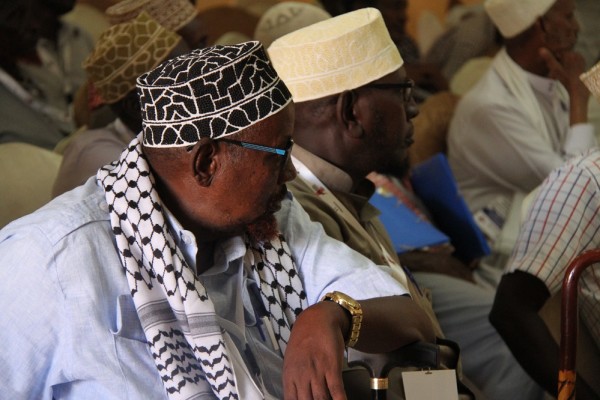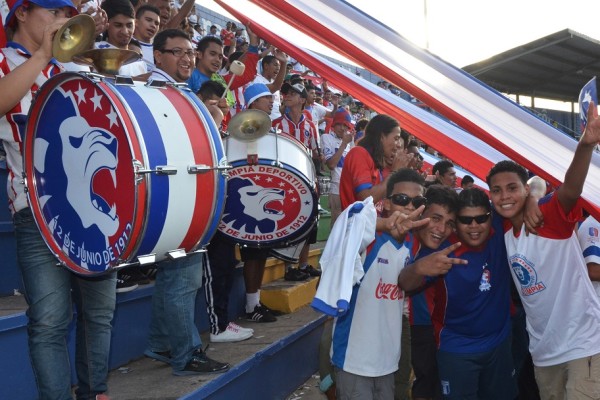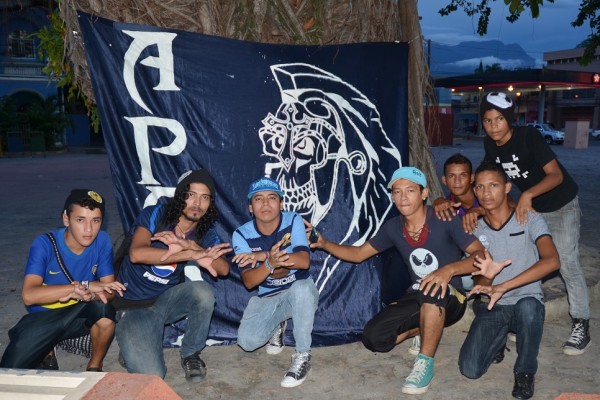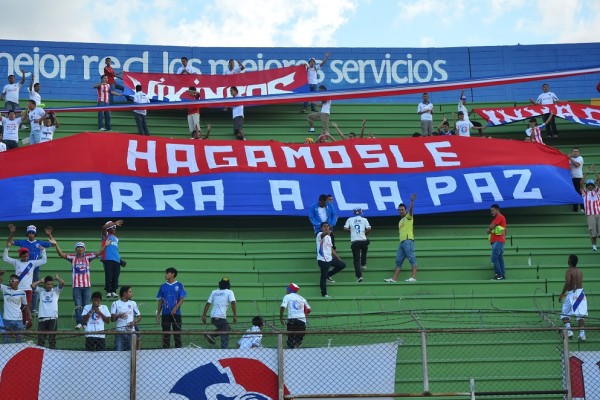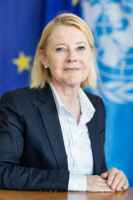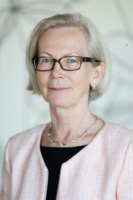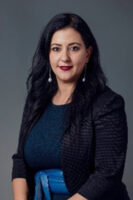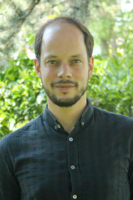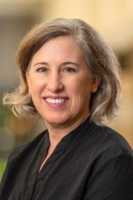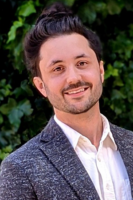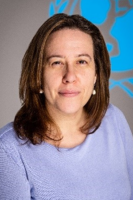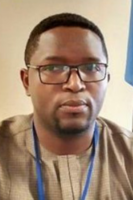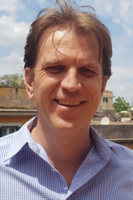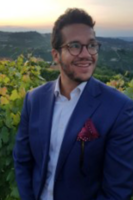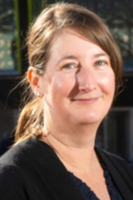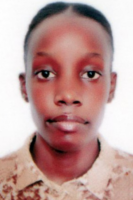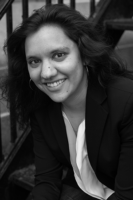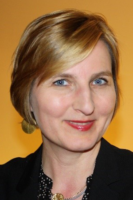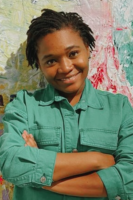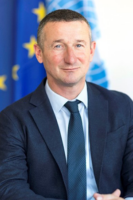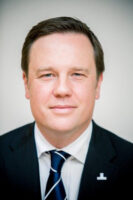In this interview, Interpeace’s Great Lakes Programme Coordinator, Isabelle Peter, discusses the organization’s peace education initiative in the three countries of Rwanda, Burundi and the eastern Democratic Republic of Congo (DRC). The peace education initiative is part of Interpeace’s Cross-Border Peacebuilding programme, implemented in collaboration with six regional organisations in the region.
What is Peace Education, and how does it fit into Interpeace’s efforts to build lasting peace in the Great Lakes region?
Peace education is both about content and approach. It focuses on learning about and strengthening the skills, attitudes, principles and values that individuals and communities can rely on to transform negative situations of potential conflict into more positive situations. In terms of what constitutes peace education in the context of the Great Lakes region, it is a concept that looks at the fundamental causes and structures that underlie the continuous conflicts that the region has experienced.
Interpeace’s work on peace education was in response to a call by the people of the region themselves, who identified peace education as an important foundation for lasting peace. This emerged as a recommendation in a participatory research carried out by Interpeace’s regional peacebuilding programme, which we implement together with six partner organizations in Rwanda, Burundi and the Democratic Republic of Congo (DRC). The mandate itself was given at a regional forum in Kinshasa in December 2015. In the face of repetitive conflicts that have occurred for the last 20 years or more, citizens from the region − among them youth, religious leaders, parliamentarians, ministers, regional organizations and women’s groups − came together in Kinshasa and clearly stated that peace education was absolutely necessary for the region to stand a chance at sustainable peace in the future. This shows how the people of the Great Lakes, in their own analysis, deeply understand the essence of peace education as a building block for lasting peace.
In the framework of Interpeace’s Great Lakes programme, the youth emerge as a key actor, historically instrumentalized by certain groups to fight for or to assert certain vested interests, and often also manipulated to commit acts of violence. What people in the region have said is that the youth can be that transformative force that can change the future of the region. We therefore mainly target to transform the youth since they are well positioned to shape a better future for the region. Although the focus is on the youth, peace education is more broadly about transforming people, shaping the attitudes and behaviour of individuals such that when faced with situations of potential conflict, they can transform these into situations that actually support peace and social cohesion.
Peace education, with a particular emphasis on the youth, is then a very important approach that can support this positive role that the youth can play.
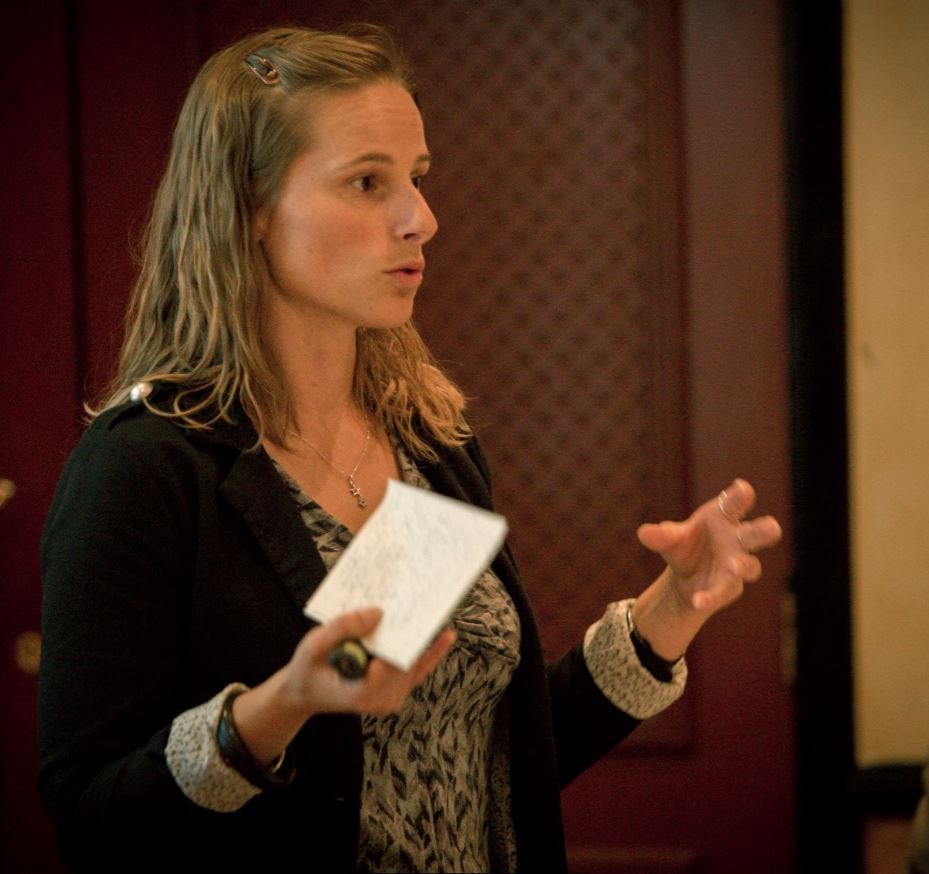
Interpeace's Great Lakes Programme Coordinator Isabelle Peter. Photo Credit: Interpeace.
It has often been remarked that “Peace Education does not happen in a classroom.” What does this statement signify in the context of the Great Lakes Region?
That is a very important statement, but it is also a challenge that we have encountered in the programme. All the stakeholders we have interacted with in the region − among them policy makers, decision makers, teachers and education systems − are trying to find a way to make peace education more practical. This matter came up when we had a regional peace education summit in Nairobi in March 2016, with about 80 decision makers, policy makers and peace educational practitioners in attendance. What they said is that for peace education to really be effective, it must empower the individual to have the capacity to transform a situation, based on his or her knowledge, skills, behaviour and attitudes in line with the principles of dialogue, tolerance, mutual understanding and active listening.
Let us take the example of a young person in the Great Lakes region, confronted with a situation where he or she is for instance being approached by a politician or by the youth wing of a political party to fight for a certain cause or to carry out some actions that are not helpful for peace. If you place yourself in the shoes of this individual, the question is: how can you transform this situation? How can you react to it in a way that can turn it into something more positive? First of all, you must be able to resist the manipulation, and you also need to see how you can engage your family or your community for them to similarly resist this kind of manipulation. What this means is that peace education needs to be something practical that individuals and communities can use in their daily lives.
One important realization that has emerged from the programme is that the education system needs to integrate a form of peace education that explains what conflict transformation entails and also integrates the history of the region. But more importantly, this needs to be done in a way that really empowers those who undergo peace education to be able to recognize situations of potential conflict and to be able to transform them. I think that when this happens, we will see a new, empowered generation that can really turn around the future of the Great Lakes.
Interpeace has been working with the International Conference on the Great Lakes Region (ICGLR) and UNESCO on peace education for a while now. Have you also been able to reach out to the National Governments? How have they responded?
Yes, we have been able to reach out to the national governments and their response has been generally positive. This is in following with Interpeace’s approach, which seeks to bridge between the grassroots and the decision-making levels. Ever since the peace education emerged as a strong recommendation from the people themselves, we have made effort to upstream this recommendation and we are engaging national and regional decision makers, to provide a viable communication channel between the grassroots and the decision makers.
Incidentally, we have come to realize that all the national governments in the Great Lakes region already have peace education within their policies and programmes. This happened when we organized the peace education summit in Nairobi back in March 2016 in collaboration with the ICGLR and UNESCO. We had high level representatives from the education ministries of Rwanda, Burundi and the DRC, but also from Uganda and South Sudan. In fact, some of these States that we weren’t really targeting, came up and said they too wanted to be part of the peace education initiative. This very fact shows that there is a strong interest in promoting peace education among the various governments. So there is no doubt that the political will exists.
The key challenge that emerged in the Nairobi Summit is that the governments are sometimes short of the expertise required to implement peace education in a meaningful way, not just in the classrooms. For peace education to be indeed more transformative, for instance among the youth, the governments need to have certain tools at their disposal. They for instance need trained educators who know how exactly to implement peace education. Another key priority that was expressed at the Nairobi Summit was the need to harmonize peace education on the regional level. The public statement of the ICGLR Executive Secretary in a regional newspaper article illustrates the priority that peace education has received in the region. In the article, the Executive Secretary expressed his wish to make peace education a priority among ICGLR Member States, and mentioned during the Summit, since his term was coming to an end, that it is an initiative that he will endeavour to pass on to his successor as Executive Secretary.
So generally, we have reached out to national governments, and they have been very open and willing to work on peace education. What needs additional work is how to confront the challenges facing the implementation of the policies and making them reality.
Listening to you it seems that the National Governments have a very pedagogical, curriculum-based approach. Is there a way in which you think they can also reach, for instance, youth who are not in school?
That is a very important point. At the Nairobi Summit, the focus was largely on youth within the school systems. There were however discussions in the Summit on the question of how to reach non-schooling youths. A key actor that the Interpeace programme is working with is the religious denominations − the Christian faith, Islam − because they often have structures in place that allow them to reach wider demographics, including non-schooling youths. These non-schooling youths are a very important demographic because they are more prone to manipulation due to their precarious conditions. Peace education of course goes beyond just the schooling system. That is why our work with the churches, mosques and other similar actors is important in reaching these youths who exist on the periphery.
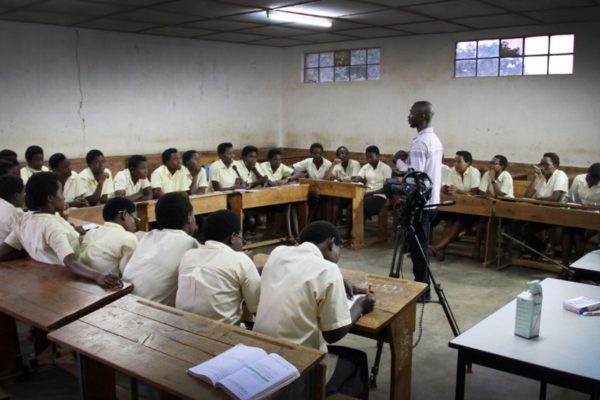
Crédits photo : CENAP
How about the local communities? Are they directly involved in the peace education initiative?
We work very closely with the local communities in the programme, which helps us make a distinction between formal and informal peace education. Formal peace education is more of the school curriculum-oriented kind, while informal peace education is the kind that can take place outside of these formal systems. Our six partner organizations particularly work very much with the local communities in terms of promoting peace education, itself a recommendation that we got informally from the grassroots populations.
One dimension of our work with the communities includes supporting cross-border dialogue spaces, which we do in collaboration with our six partner teams. We currently have six dialogues spaces across Rwanda, Burundi and the DRC, each comprising 20 to 30 community members, among them leaders who represent different communities and socio-political constituencies. We work with these cross-border community dialogue groups to come up with and implement initiatives that foster peace education. They have taken on a number of initiatives, sometimes also involving educators, to discuss the kind of values, principles and mindsets that are important in order to build lasting peace in the region. Participants in the dialogue spaces have gone further and reached out to their own communities, their own families, their own work places and to young people as well.
There is this nice story of a lady from one of our dialogue spaces who has become a sort of “go to” dialogue facilitator in her workplace. Whenever there is a conflict or some kind of tension in the office, her colleagues come to her, and she uses her peacebuilder’s mindset to help them to resolve the conflict through dialogue.
A second dimension is our work with 15 Civil Society Organizations (CSOs) in the three countries to amplify the peace education initiative. Our partner teams engage these CSOs to collaboratively develop concrete initiatives, again aimed at increasing the outreach of our peacebuilding values and the peace education initiative. Some of the activities have included trainings with the CSOs, equipping them to in turn train their own members. We also work with Scouts associations from Rwanda, Burundi and the DRC, and employ tools such as participatory theatre and video sketches to raise awareness and to transform the people we interact with into agents of change in the region.
All this work is quite profound. But then, in what unique ways would you say Interpeace’s approach to peace education is different from that of other actors and stakeholders in the Great Lakes region?
One thing is that we acknowledge the complexity of the regional reality, and we also recognize that change is always a result of many different efforts coming together − starting with the communities’ innate capacities to prevent and transform conflicts. This is why we work with peace education actors in both the formal and informal sectors. In the formal sector, we for example collaborate with UNESCO. We also collaborate with other international organizations such as the Aegis Trust, which has carried out very impressive engagements on peace education in Rwanda. In the informal sector we work with the churches and other different associations.
I think what is important is to see how we can all collaborate, to discern the gaps in the work of others that we can complement, and vice versa. So in that sense, we continue to be in communication with these like-minded organizations, and we invite them to our engagements, for example the 2016 regional peace education summit in Nairobi. Similarly, this month (February 2017) we were invited by UNESCO to speak at the SDG4 Regional Forum for Eastern Africa, which was a high level forum organized by UNESCO in Dar es Salaam, Tanzania, on the implementation of the 2030 Education Agenda.
As Interpeace, our comparative or added advantage is that we have structures and networks in place to link the grassroots level to the national and regional levels. For our work in the Great Lakes region, we for instance have formal collaboration with the International Conference on the Great Lakes Region (ICGLR) and the Economic Community of the Great Lakes Countries (CEGPL). These collaborations help us to see how we can foster advocacy for peace education, how we can really have a dialogue that is more inclusive, brings all tracks on board, and allows for an exchange not only between policy makers, peace education practitioners and students within the formal schooling systems, but also the international organizations and other actors and stakeholders who are involved. In all these collaborations, what is most important to us is to catalyze collective action towards fostering and better facilitating the implementation of peace education.
A second important element that Interpeace and its six partners bring is the voice of the people, who clearly articulated the importance of peace education as a recommendation in a research study that involved several thousand grassroots participants. This voice of the people weighs in to boost our collaboration with other stakeholders and to leverage peace education efforts in the region.
I am sure there must be challenges in these efforts to lay a firm foundation for peace education in the region. What are some of them?
The existing challenges came out clearly at regional peace education summit in Nairobi. The main challenge raised by the participants was about the actualization of the peace education policy frameworks into practice. Several elements are needed for effective implementation – adequate expertise is needed, tools are needed, structures are needed, and of course there are funding needs.
These challenges may also be related to the current global political environment in terms of the donor landscape. Donors and the international community want to see rapidly visible peace dividends, understandably because they are accountable to their own parliaments back at home for the funding that they provide. However, the reality is that addressing the root causes of conflicts in the Great Lakes, requires long processes. Peace education is one important pillar in mitigating the root causes for the long term, but it is difficult to demonstrate quick peace dividends from peace education because its goal is to transform a generation.
This presents a dilemma, and may be one of the reasons why it can sometimes be difficult to have the kind of support for peace education that is needed from the international community. But on the flipside, this dilemma is also a call to action for actors working on the ground to really demonstrate why peace education is an urgent imperative.
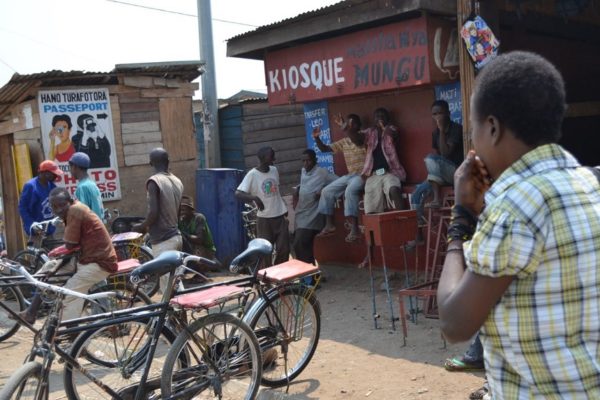
Crédits photo : APC
And finally, you mentioned the recent UNESCO forum in Dar es Salaam. What key messages did Interpeace seek to pass regarding peace education in the region?
Together with our partner organizations in the regional cross-border programme, we used the opportunity to be the spokesperson for the needs and the priorities that the local populations have expressed to us through our programmes.
We had three primary messages that we wanted to amplify for the ministries of education from eastern Africa, the UN actors and other segments of the international community that were present at the forum.
Our first message was to highlight the important need for peace education in the region. Because this was a forum on education in general, its focus was far broader than peace education. Our message was therefore that even if we have perfect education systems in place – with important aspects such as gender considerations, ICT (Information and Communications Technology) et. cetera – all of these can be undermined if there is continuous conflict in the region. The fundamental starting point is therefore to really be able to create a situation of lasting peace, which can then allow all the other systems and processes to emerge in a sustainable way. Our number one message was therefore the importance and need for peace education to be included in the formal education systems.
Secondly, we wanted to draw focus on the approach to peace education, not just the content. This means equipping students with the skills, principles and values that they can use in their own daily lives to transform potentially negative situations into positive ones, to actually make peacebuilders out of the students and even out of the teachers themselves – peacebuilders for peace in the region.
Our third message was to emphasize the importance of a regional approach to peace education. This is because in both Eastern Africa and the Great Lakes region, we have seen how political developments in one country can spill over into neighbouring countries, sometimes with detrimental consequences. If we accept this reality, it also means that peace education efforts cannot just focus on the national level. We must take into account the regional level. So our three primary messages are the importance of peace education, peace education as both an approach and as a mindset, and thirdly the importance of the regional perspective.
We also took the opportunity to further our efforts to influence the policies and priorities of the governments present at the forum regarding peace education.
Read also
A Discussion Paper on Peace Education in the Great Lakes Region (PDF)
On 15 - 16 February 2017, Interpeace participated in the SDG4 Regional Forum for Eastern Africa in Dar es Salaam, Tanzania. The high level forum – organized by UNESCO with the support of the SDG4 co-conveners (ILO, UNFPA, UNDP, UNICEF, UN Women, UNHCR and the World Bank) – seeks to enable Member States under the UNESCO Regional Office for Eastern Africa (Comoros, Djibouti, Eritrea, Ethiopia, Kenya, Madagascar, Mauritius, Rwanda, Seychelles, Somalia, South Sudan, Tanzania and Uganda) to present their national SDG4 roadmaps in support of the implementation of the 2030 Education Agenda. The national delegations at the forum will be led by their respective Ministers of Education and will include the SDG 4 National Focal Points.
Interpeace had a speaking role at the forum, which provided an opportunity to share its experience working with local, national and international partners to promote peace education in the Great Lakes region of Africa. This experience and suggested actions points are included in a discussion paper, available in full ici.
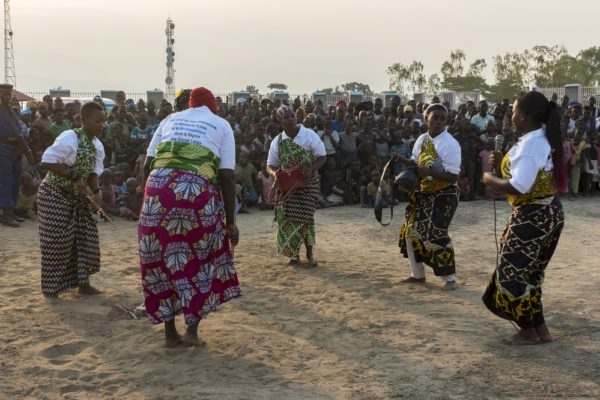
Crédit photo : Interpeace
Contexte
The African Great Lakes Region has experienced some of the most intractable conflicts ever witnessed in Africa. Millions of lives have been lost in recurrent conflicts that have caused indescribable suffering to the peoples of the region. In the three countries of Rwanda, Burundi and the Democratic Republic of Congo (DRC), the cross-border nature of the conflicts has left profound marks on the populations of the region, particularly on the youth. Many youth have historically played a central role in the recurrent conflicts via armed groups that they join either through coercion or manipulation, resulting in a situation where violence has become the primary means of dealing with conflict.
This discussion paper presents action points that stemmed from a regional summit that took place in March 2016 in Nairobi on Peace Education in the Great Lakes Region, co-organized by the International Conference on the Great Lakes Region (ICGLR), Interpeace and UNESCO. Participants in the summit included officials from the Ministries of Education, Gender and Youth from Governments of Rwanda, Burundi and the DRC; parliamentarians; leaders of provincial governments; education practitioners; as well as technical experts in peacebuilding and peace education from the ICGLR, Interpeace and UNESCO.
Participants stressed the importance of strengthening moral and ethical values among youth to ensure that they become the drivers of constructive social change and the pillars of sustainable peace and stability in the Great Lakes region. They therefore called for the rapid advancement of a regional peace education policy that will provide a foundation for all member states to institutionalize and promote peace education within their respective countries, both at the formal and non-formal levels. The Summit further emphasized the urgency of making peace education a priority for policy makers in the region.
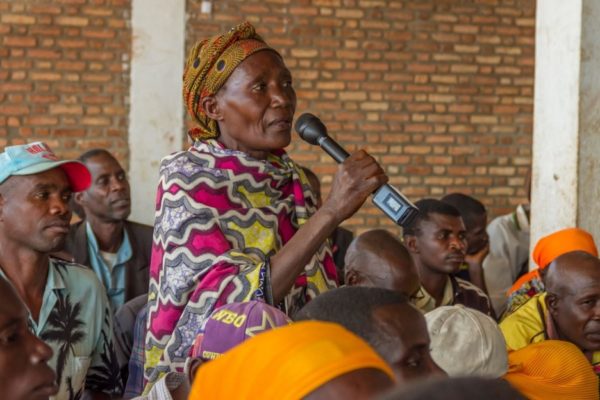
Crédit photo : Interpeace
Key Proposals on the way forward
The overarching policy proposal is a call to situate peace education at the centre of a collective effort by regional states, regional bodies and development partners in the Great Lakes, with the long-term goal of forming future generations of young people who will be effective agents of peace in the region, a key factor in building lasting peace. It is in this regard that participants in the summit proposed the following recommendations to stakeholders:
- Development Partners, both bilateral and multilateral, are encouraged to further the development of peace education by supporting regional policy making efforts, the production of the necessary pedagogical tools as well as reinforcing collaboration and partnerships between relevant actors in the region.
- Regional Organizations are encouraged to place peace education as a priority item on their agenda for peace and stability in the Great lakes region. This call is particularly relevant to the mandates of the Economic Community of the Great Lakes Countries (CEPGL), the East African Community (EAC), ICGLR, the Economic Community of Central African States (ECCAS) and the African Union.
- Education Ministries are encouraged to work towards standardizing peace education curriculum within their countries, and to mobilize the requisite human capacities and material resources required that will enable the provision of effective, formal peace education. This comes out of the realization that although peace education exists in all regional countries, albeit at varying degrees of implementation, there are gaps between the existing political will and action on the ground.
Beyond formal peace education in schools, participants recommended the engagement of other actors, such as parents and the church, which can play an important role in providing peace education to non-schooling youth.
Download the full paper (PDF)
Save the date!
Building on the success of the 2015 Stockholm Peace Talks held at the Swedish Parliament, a second edition is now being planned.
Organized under the theme “Better Together”, the aim of the Stockholm Peace Talks is to inspire people and spark a discussion on how each and every one of us can play a role in fostering greater cohesion and inclusion in Sweden and abroad. In our increasingly interdependent world, respect for diversity, inclusion and cooperation among sectors are not just desirable but vital elements that lay the foundations for peaceful societies. Speakers of the 2017 Stockholm Peace Talks will share tangible experiences, personal stories and ideas to highlight the role that each and everyone one of us can play in contributing to inclusion and peace.
The event will take place on March 21st in Stockhom's City Hall, from 5:00 pm to 7:00 pm.
The event is organized by Interpeace, in partnership with Ben & Jerry'sla Plateforme de consolidation de la paix de Genève et Swedish Postcode Foundation, with digital partners Darwin Digital.
Previous Peace Talks have been held at the United Nations Offices in Geneva and Kenya as well as at the Swedish Parliament, the Global Centre for Pluralism in Ottawa and at London City Hall. The Peace Talks were co-founded by the United Nations Office at Geneva, Interpeace and the Geneva Peacebuilding Platform with the support of the Swiss Government.
Visit the pourparlers de paix, for more information.
Watch the best moments of the 2015 Stockholm Peace Talks here:
Amid conflict and war, the people most affected by these circumstances have time and time again, risen from misfortune, because of their capacities to organize and transform conflict into opportunities for peace. Strengthening these already existing local capacities must therefore be a strategic priority to peacebuilding, as it ensures sustainability.
The mainstream approach to peacebuilding is for the most part premised on finding solutions to fragility. As such, conflict analysis is the primary tool used to inform programmes and policies. Though an understanding of conflict dynamics, including root causes is necessary in order to develop an appropriate response, the fragility focus tends to overshadow the capacities and processes which are present, even in fragile contexts. Because even in the most challenging situations, there are individuals and communities acting to counter the effects and causes of conflict. Failure to take stock of these efforts can, and often does, undermine the effectiveness of peacebuilding interventions, warranting criticism that programmes and policies are too generic and not sufficiently context specific.
Based on Interpeace’s experience with its Frameworks for Assessing Resilience programme (FAR) in Liberia, Guatemala and Timor-Leste, we propose that using resilience assessments alongside conflict analyses can make peacebuilding initiatives more context-specific, more locally-owned and therefore more impactful. A resilience orientation offers an operational strategy for making peacebuilding more assertive about building peace via transformative processes as opposed to being solely a response to fragility.
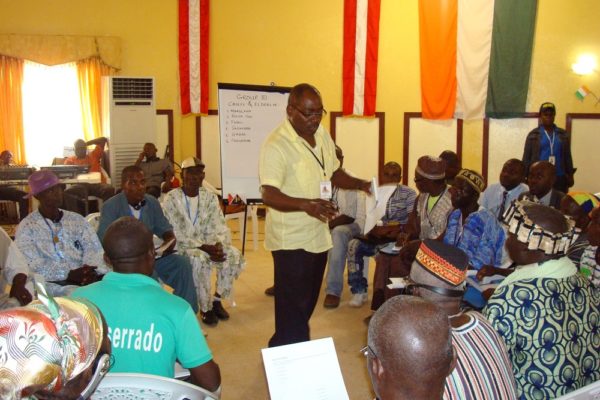
Liberia. Photo credit: Interpeace
What does resilience mean in the context of peacebuilding?
Resilience is about transformation. This “transformative” dimension resonates particularly with peacebuilders who argue that positive peace is not just about the absence of violence, but constructive social change that replaces exclusionary, unjust and inequitable structures, for those that are inclusive, participatory and equitable.
A resilience approach to peacebuilding gives particular importance to processes by which societies collectively and peacefully transform relationships to address the factors which enabled conflict to emerge in the first place. This transformative dimension evolves traditional interpretations of resilience where the emphasis is on bouncing back from an external shock.
Resilience assessments seek to identify the already existing capacities and strengths in society, including individual personality traits, solidarity networks of communities and alternative livelihood strategies. Identifying these capacities provides context-specific information and fosters nationally-owned peacebuilding processes.
Frameworks for Assessing Resilience (FAR).
In 2014, Interpeace launched the Frameworks for Assessing Resilience (FAR) project to explore resilience as a key tool for advancing peacebuilding processes and to develop methods for assessing this. Rather than focusing on obstacles to peace, FAR seeks to identify resilience to conflict by looking for existing strengths, assets, capacities, strategies, processes and structures that allow individuals, communities and societies to overcome the legacy of past violent conflict, address current violence and threats to peace, and ultimately prevent future violent conflict.
As countries with fragile peace environments, Timor-Leste, Liberia et un Guatemala were chosen to deploy pilot FAR programmes. Under the FAR programme, country-level research was driven and implemented by local stakeholders engaged in deepening their understanding of existing resilience capacities in their societies, and invested in promoting peacebuilding processes. In Liberia and Timor-Leste, research was led by Interpeace’s local partners, the Platform for Dialogue and Peace (P4DP) and the Centre of Studies for Peace and Development (CEPAD), respectively. In Guatemala, a team from Interpeace’s regional Latin America Office implemented the programme.
In all three countries, research teams conducted nationwide consultations through focus group discussions and interviews in order to define context-specific resilience and map the different national strategies and resources. The findings of this exploratory phase provided the basis for multi-sector dialogues among key national stakeholders in the respective countries. These Participatory Action Research dialogues have resulted in concrete policy recommendations and action plans for strengthening peace and resilience.
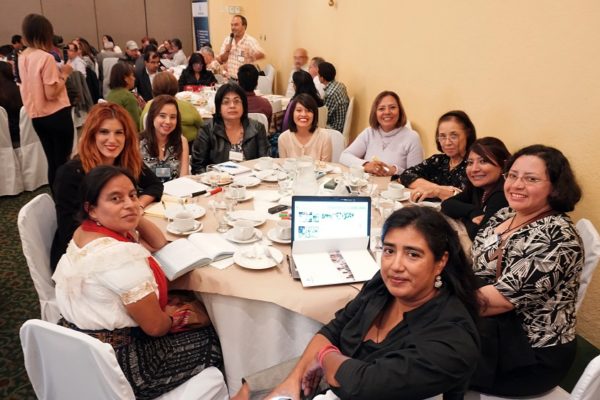
Guatemala. Photo credit: Interpeace
The convening power of the resilience approach
A resilience-orientation seeks to ascertain the existing resources that people tap into and the strategies, strengths, assets and capacities available to them, to cope with or transform conditions that threaten peace and provoke new patterns of violence.
Reorienting focus group discussions or interviews away from fragility to discuss the strengths, capacities or skills to cope can have a transformative impact on the persons engaged. The experiences of the three pilot programmes revealed that national actors have greater confidence and are more willing to take ownership of dialogue processes that are organized around resilience and their ability to effect change. “Resilience” as opposed to “fragility” has a converging and convening power. Discussing the resilience of a country rather than its fractures makes convening opposing parties easier.
Resilience does not automatically translate to peace
Recognizing that resilience is not unequivocally good but a neutral concept with the potential of bringing about both positive and negative outcomes has important implications for the design of peacebuilding strategies. Thus, the careful analysis of which capacities have the potential to bring about peace, and which need to be mitigated should be an integral part of any resilience assessment. Identifying negative manifestations of resilience - such as violent youth gangs – can inform peacebuilding strategies in particular ways. Whereas a fragility-informed intervention would likely seek to stop such violent practices and dismantle these groups altogether, peacebuilding interventions informed by a resilience orientation will explore how to build on these existing capacities and solidarity networks while focusing on mitigating or eliminating the violent tactics employed.
Resilience as a common basis for humanitarian response
Peace cannot be built without interventions that include positive economic models, security provision, political participation, social services, environmental protection, rule of law and humanitarian protection. Resilience has the potential to link these parallel interventions by integrating peacebuilding processes more effectively.
Conflict is an incremental stressor that undermines the strength and cohesion that is needed to deal with external shocks such as natural disasters. A resilience-orientation can help societies detect and strengthen existing assets before violence occurs. Resilience promotes a preventive, rather than a remedial approach to peacebuilding.
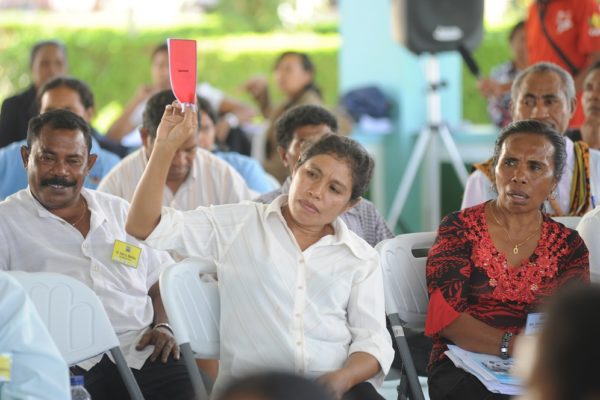
Timor Leste. Photo credit: Steve Tickner
For a better understanding of the resilience approach:
Lire le note d'orientation afin d'évaluer la résilience pour la paix.
Lire une bref exposé qui reflète ce que l'expérience du FAR nous a appris sur les spécificités de la résilience en relation avec les conflits et la valeur ajoutée de l'utilisation d'une approche de résilience pour la consolidation de la paix
Lire une note d'information sur la pertinence de la résilience pour la paix dans la poursuite des Objectifs de développement durable de l'Agenda 2030.
En savoir plus sur les études de cas spécifiques :
Lire le rapport sur le Liberia.
Lire le rapport sur le Timor oriental.
Lire le rapport d'enquête sur le Timor oriental.
Lire le rapport sur le Guatemala.
Lire le rapport d'enquête sur le Guatemala.
For three days between 14-16 December 2016, a cross-section of stakeholders from Mandera County held a peacebuilding forum in Mandera town, along Kenya’s tri-border with Somalia and Ethiopia, to validate the findings of the consultative phase of the Mandera Peacebuilding Programme.
The programme is jointly implemented in Mandera County by Interpeace and Kenya’s National Cohesion and Integration Commission (NCIC), with the support of the German Federal Foreign Office. Its objective is to achieve sustainable, long term peace in Mandera County through the collective identification of the challenges to peace and the participatory development of consensus-based solutions to the challenges.
Towards this end, the Mandera programme aims to integrate grassroots aspirations for peace, building upon local capacities and providing a strategic link with decision and policy makers at the county and national level. Its approach marks a departure from past peace initiatives, which were largely top-down interventions mobilised to contain specific situations that had already escalated into violence.
Participants at the forum included Mandera Governor Ali Roba, Senator Billow Kerrow, NCIC CEO Hassan Sheikh Mohamed, all Members of Parliament from the County and other local leaders, Interpeace’s Johan Svensson and representatives of the local communities.
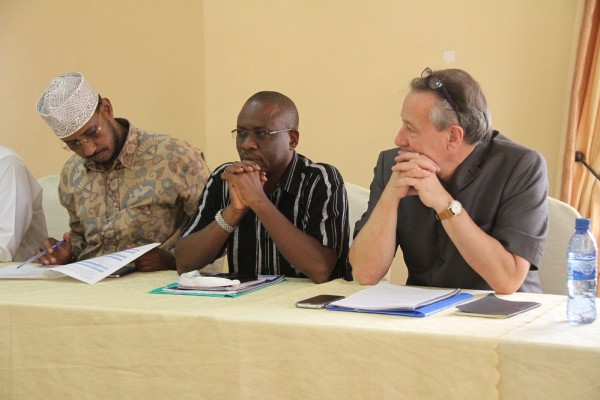
LEFT to RIGHT - Mandera East MP Abdiaziz Ali Farah, County Commissioner Fredrick Shisia and Interpeace's Johan Svensson. Photo credit: Interpeace.
The forum was officially opened by Governor Roba, who set the stage by denouncing the clannism that has long made peace elusive for residents of Mandera.
“When a wrong is committed, let us focus on the individuals suspected of culpability, not their clans collectively,” Governor Roba said in his opening remarks.
Mandera’s population is mainly ethnic Somali. Despite being almost homogenous in the ethnic sense, rivalries between the four main clans – the Garreh, Murule, Degodia and the ‘Corner tribes,’ which are the smaller clans – have often led to episodes of conflict, which periodically degenerate into violent clashes. The conflicts, traditionally fuelled by competition over resources, have been exacerbated by new conflict drivers such as competition between clans for political influence, disputes over land and rampant insecurity due to constant attacks by Al Shabaab militants from Somalia.
The devolution of governance in Kenya, which was a key plank in a new Constitution adopted in 2010, has intensified competition for political positions, perceived as a guarantee for access to economic resources by the “winning” clans to the disadvantage of the “losing” clans. This contestation over political posts has emerged as a critical point of concern for the residents of Mandera ahead of local and national elections scheduled for 2017.
Considering the complexity of the situation, stakeholders resolved that all hands are needed on deck to make sustainable peace a reality for the people of Mandera.
“Everyone has a role in building lasting peace,” said Mr Johan Svensson, representing Interpeace in Eastern and Central Africa. “It is a process that requires the participation of all the stakeholders across the society.”
The NCIC – formed to facilitate and promote equality of opportunity, good relations, harmony and peaceful coexistence between persons of different ethnic, colour, religious and racial backgrounds in Kenya – has pledged its full support in bridging between the vertical space between the aspirations of grassroots communities in Mandera and grassroots populations at the national level.
“We take issues of peace very seriously, and we will spare no effort in facilitating this initiative to bring lasting peace to Mandera,” NCIC’s CEO Hassan Sheikh Mohamed said.
The role of social media also came into focus at the forum, with participants urging the NCIC to educate Kenyans on the responsible use of social media to help avert poll violence.
“Social media is useful, but let us not allow it to fuel divisions. We are Muslims – we are a people of peace,” said Mandera Women Representative Fathia Mahboub.
Related Stories
Kenya: Raising Local Voices for Peace in Mandera
Honduras is one of the poorest countries in Latin America and at the same time, one of the most violent in the world according to the number of homicides registered annually. In this context of institutional fragility, inequality, high levels of poverty, corruption and impunity, there is nevertheless an event that awakens hope in the Honduran society: football. For the Honduran society, football is a 90-minute pause of happiness amid decades of anomie.
In societies where there are no institutional and social mechanisms for conflict transformation, violence that starts as a natural rivalry between two football teams, can transcend the limits of a stadium and become a social problem.
An example of this, is the violence related to the football clubs in Honduras. Young fans of a local football team, who are victims of social exclusion and lack of opportunities, have expressed their hopes and identity in the support they give to a football team. This has transitioned from a natural rivalry between teams, to violence in the streets. The violence that is perpetrated between the fans of these football clubs has evolved from fights and blows in the stadium to open armed confrontations within their own communities.
In contexts, such as Honduras, youth groups (gangs, sports and school clubs, rock groups and other forms of youth groupings) represent a mechanism of cohesion, identity and solidarity that are strengthened and radicalized due on the one hand, to the excessive violence exercised by other forms of associations and social integration (school and family) and, secondly, the repressive action of State agents (police).
Interpeace and sports clubs in Honduras
In February of 2014, Interpeace’s Office for Latin America launched the project “Sports Clubs for Peace” avec l’aide de la Berghof Foundation. Through this programme, Interpeace worked to strengthen the capacities of the leaders of the two main sports clubs in the country, the “Ultra Fiel” and the “Revolucionarios,” to address conflicts in non-violent and creative ways. Additionally, Interpeace contributed to building a positive perception of the sports clubs as relevant actors for the construction of peace in Honduras. In order to reach this objective, Interpeace implemented a training programme on issues related to conflict transformation, peace culture and mediations with young members of the sports clubs in Tegucigalpa, San Pedro Sula, la Ceiba and Choluteca, so that young participants could have the necessary tools to become agents of change in favor of non-violence and peace in the country.
Journalism, youth and sports for peace in Honduras
In Honduras, the young sports club’s members have been victims of stigmatization and criminalization for belonging to these clubs. This is aggravated by the fact that football is one of the activities in the country that is given more media attention. In this way, the sports clubs members are permanently in the public eye, associated less with the sport and more with the violence.
As part of the efforts to deepen the work that began with “Sports Clubs for Peace,” beginning on November 2016, Interpeace launched the project "Journalism, youth and sports for peace in Honduras." In an alliance with Presse gratuite illimitée and the Central American digital newspaper El Faro, the objective of the project is to contribute to the non-violent transformation of conflicts by changing perceptions and reducing the stigmatization of young people in Honduras.
The project "Journalism, youth and sports for peace" will seek to help young members of the main Honduran sports clubs, become agents of change in favor of nonviolence and peace in the country. In addition, the project seeks to strengthen ties between sports club members and the Honduran press in favor of alternative narratives that focus on understanding the causes of violence and contribute to a positive change in the public perception of marginalized youth. Listening to the voice, the human dimension and the story of young people immersed in cycles of violence, is an essential step for the construction of peace in Honduras.
